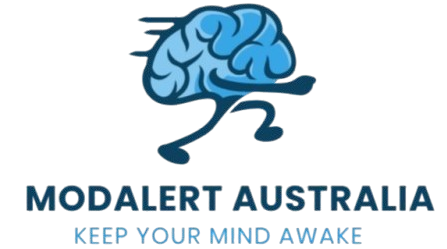Can you wake up Someone with Narcolepsy?

Can you wake someone with Narcolepsy – Narcolepsy is a long-lasting neurological condition that impacts the brain’s ability to regulate sleep and wake cycles. Patients with the disorder often suffer from extreme daytime sleepiness, abrupt sleep disorders, as well as disrupted sleeping patterns at night. A common concern is: Can you wake someone with Narcolepsy
There isn’t a simple answer. It is indeed possible to wake someone suffering from Narcolepsy, but it is more difficult than waking a person without the disorder. This blog explains the research on Narcolepsy, the reasons why awakening the narcoleptic patient isn’t easy, as well as practical suggestions to help those with sleep disorders.
What Is Narcolepsy?
A sleep disorder called Narcolepsy is characterized by:
- Excessive Daytime Sleepiness (EDS): persistent drowsiness, no matter how much sleep one receives at night.
- Cataplexy: A sudden decrease in muscle control caused by emotional stress (found in Narcolepsy Type 1).
- Sleep Paralysis: Inability to move or talk when asleep or awakening.
- Hypnagogic/Hypnopompic Hallucinations: Dream-like, vivid experiences you can experience as you fall asleep or wake up.
- Fragmented Nighttime Sleep: A frequent awakening during the night.
The cause of Narcolepsy is an insufficient level of hypocretin (orexin), a neurotransmitter responsible for regulating the state of wakefulness and REM sleep. The deficiency causes unstable sleep-wake cycles, which makes it difficult for people with narcoleptics to be awake during the day and to sleep well during the night.
Read also How To Remove Laziness From Body?
Can You Wake Someone with Narcolepsy?
It is possible to get someone to wake up. However, it will require longer to wake people who don’t have the disorder. Here’s why:
Deep Sleep Intrusion
Narcoleptics usually get into REM sleep very quickly, sometimes just a few minutes after falling asleep. The REM stage is a deep state of sleep in which dreams occur. Getting someone to wake out of this state may be a challenge.
Sleep Inertia
Some narcoleptics have sleep inertia. It is an unfocused, groggy feeling on the first awakening, lasting from minutes to several hours. This can make it more challenging to be completely alert in a short time.
Automatic Behaviors
People with Narcolepsy may continue actions (like speaking or moving) in a state of sleep, making it appear like they’re awake, even when asleep.
Excessive Daytime Sleepiness
Narcoleptics are prone to extreme tiredness; they could be able to fall asleep within minutes of being awakened.
How to Wake Someone with Narcolepsy Effectively
If you have to get up an individual suffering from Narcolepsy – whether they’re suffering from a sleep disorder or are required to rise to make an important decision, here are a few strategies to use:
Use Strong Sensory Stimuli
- Sound: An alarm that is loud (preferably one that can change tone) could be more effective than a soft one.
- Light: Open the curtains or turn on the bright lighting to signal you’re awake.
- Touch: Shaking their shoulders gently can aid, but try not to startle them.
Encourage Physical Movement
- Request them to sit or stand up to reduce insomnia inertia.
- Participating in moderate physical activity (like walking) will help people keep their minds active.
Structured Wake-Up Routine
- Regularly scheduled sleep and wake timings help to control their internal clock.
- Multiple alarms (with increased intensities) could help to prevent falling in bed.
Avoid Sudden Waking During Cataplexy
If someone suffers from Cataplexy (sudden muscle weakness), they may be alert but unable to move. If this happens:
- Be calm and assure them.
- You must wait for the event to finish (usually between a couple of seconds and minutes).
- Avoid shaking them violently if this causes stress.
Tools and Gadgets That Can Help
Many devices can assist with the process of awakening someone suffering from Narcolepsy:
- Smart Light Alarms (e.g., Philips Hue): Simulate sunrises to increase the body to wake up naturally.
- Vibrating Alarm Clocks (e.g., Sonic Bomb): Strong-force vibrations can be more powerful than sound.
- Wearable Devices (e.g., Apple Watch, Fitbit): A gentle vibration on your wrist may aid.
- Apps with Puzzle Alarms (e.g., Alarmy): You must solve a maze for the game to be turned off. It also requires involvement.
What Not to Do When Waking a Narcoleptic
- Do not assume that they’re lazy – Narcolepsy is an illness that is medically induced and not something you can choose to treat.
- Do not shake or shout too loudly – that can create anxiety or confusion.
- Don’t expect instant alertness— Sleep inertia can delay the full awakening.
Long-Term Management for Narcolepsy
If waking someone suffering from the condition is not impossible, managing them for the long term is vital to increasing their overall quality of life. The strategies can include:
Medication
- Stimulants (Modafinil, Armodafinil, Methylphenidate): Encourage awakeness.
- Sodium Oxybate (Xyrem/Xywav): Enhances sleep at night and decreases Cataplexy.
- Antidepressants (for Cataplexy): For example, venlafaxine or fluoxetine.
Recommended products
-
Modafresh 200 Mg (Modafinil)
$70.00 $245.00Price range: $70.00 through $245.00 -
Modalert 200 Mg (Modafinil)
$115.00 $550.00Price range: $115.00 through $550.00 -
Modawake 200 Mg (Modafinil)
$101.40 $486.00Price range: $101.40 through $486.00
-
Waklert 50 Mg (Armodafinil)
$60.00 $220.00Price range: $60.00 through $220.00 -
Artvigil 50 Mg (Armodafinil)
$60.00 $220.00Price range: $60.00 through $220.00 -
Armodacharge 150 Mg (Armodafinil)
$149.76 $618.00Price range: $149.76 through $618.00
Lifestyle Adjustments
- Scheduled Naps: Short (15-20 min) naps can help manage daytime sleepiness.
- Sleep Hygiene: A cool, dark, quiet bedroom promotes better nighttime sleep.
- Diet & Exercise: Avoiding heavy meals and drinking caffeine before bed can help.
Support Systems
- Instruct your friends, family members, and coworkers on Narcolepsy.
- Workplace/school accommodations (flexible schedules, nap breaks).
When to Seek Medical Help
If the act of waking someone suffering from Narcolepsy is becoming more difficult or if the symptoms get worse, seek out a doctor.
- Sleep specialist
- Neurologist
- Psychologist (for emotional support)
Modifications in medications or therapy could be required.
Conclusion
The ability to wake someone suffering from Narcolepsy can be done, however it takes patience and knowing. Due to the disruption of their sleeping patterns, people with Narcolepsy may have trouble with sleep inertia, autonomic behavior, and fast REM interruptions to sleep. Strong stimuli that encourage movement and establish a routine will stimulate the brain.
The most important thing is that Narcolepsy can be a chronic condition that needs regular medical attention and changes to your lifestyle. Should you, or anyone else you have come across with Narcolepsy, contacting a sleep expert is crucial to ensure proper treatment.
In educating people and adopting support strategies, we can assist people suffering from Narcolepsy to live happier, more awake lives.











